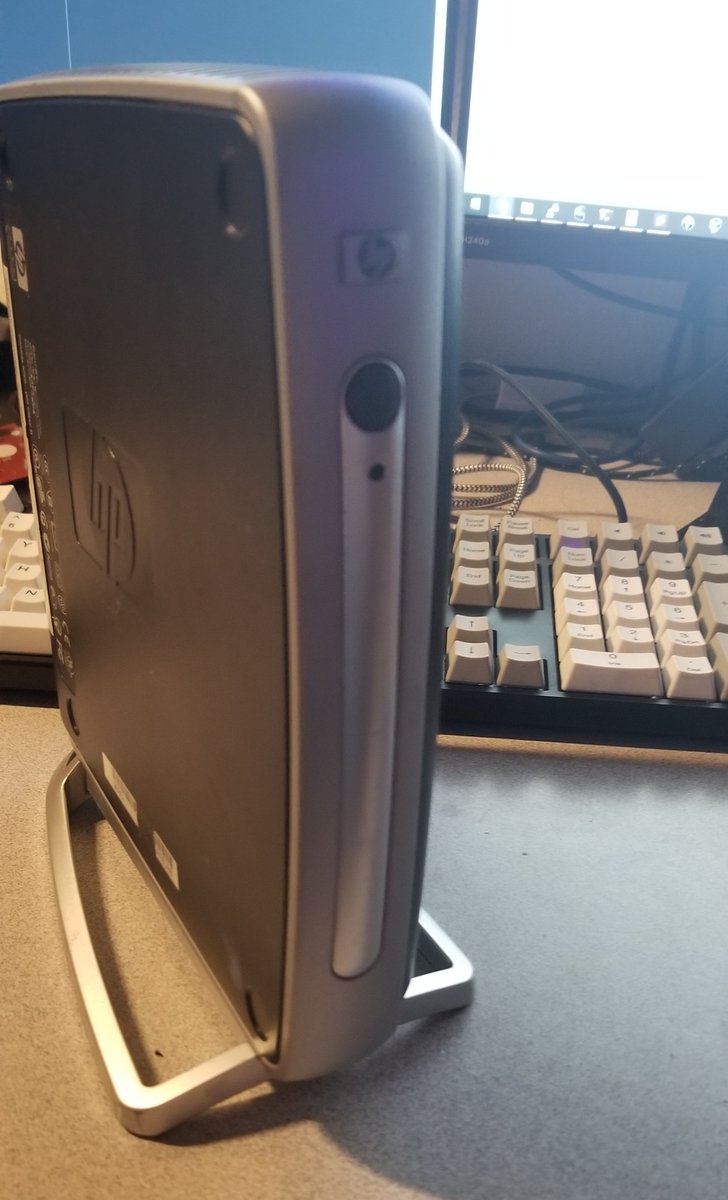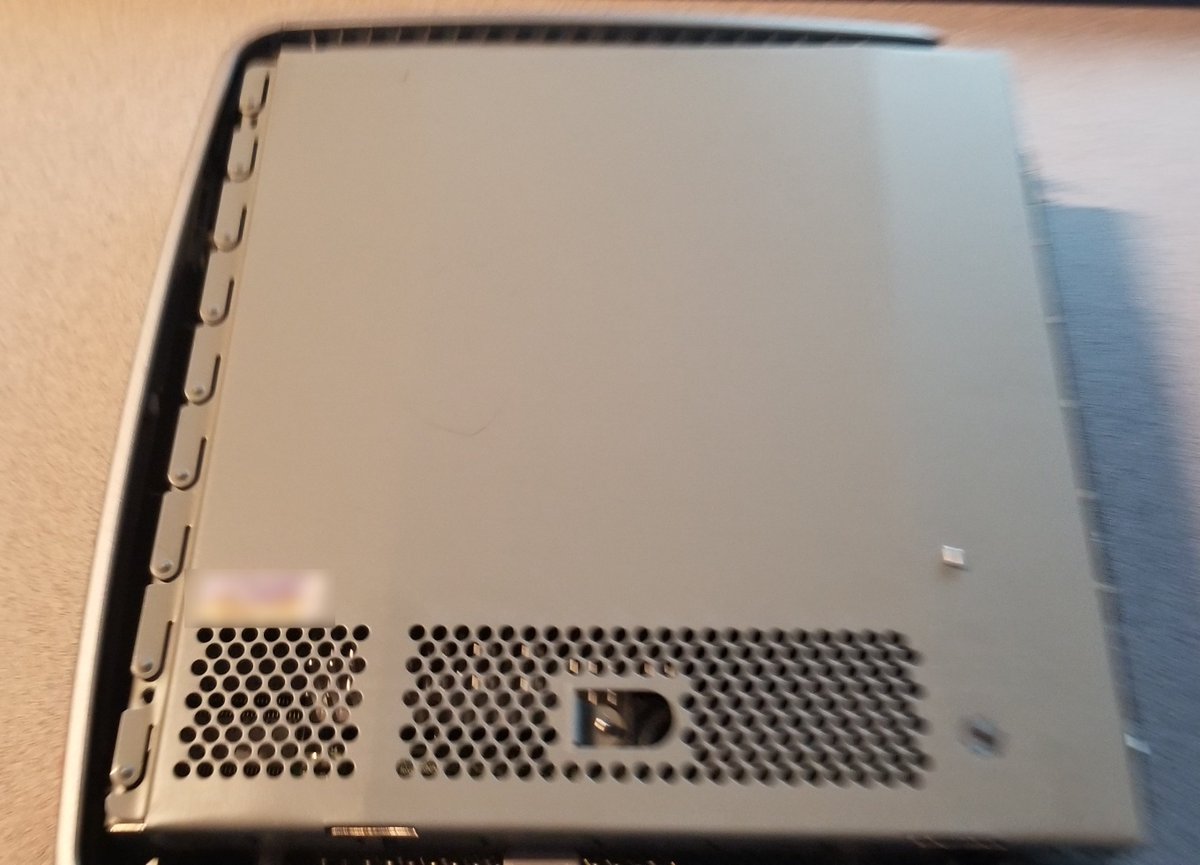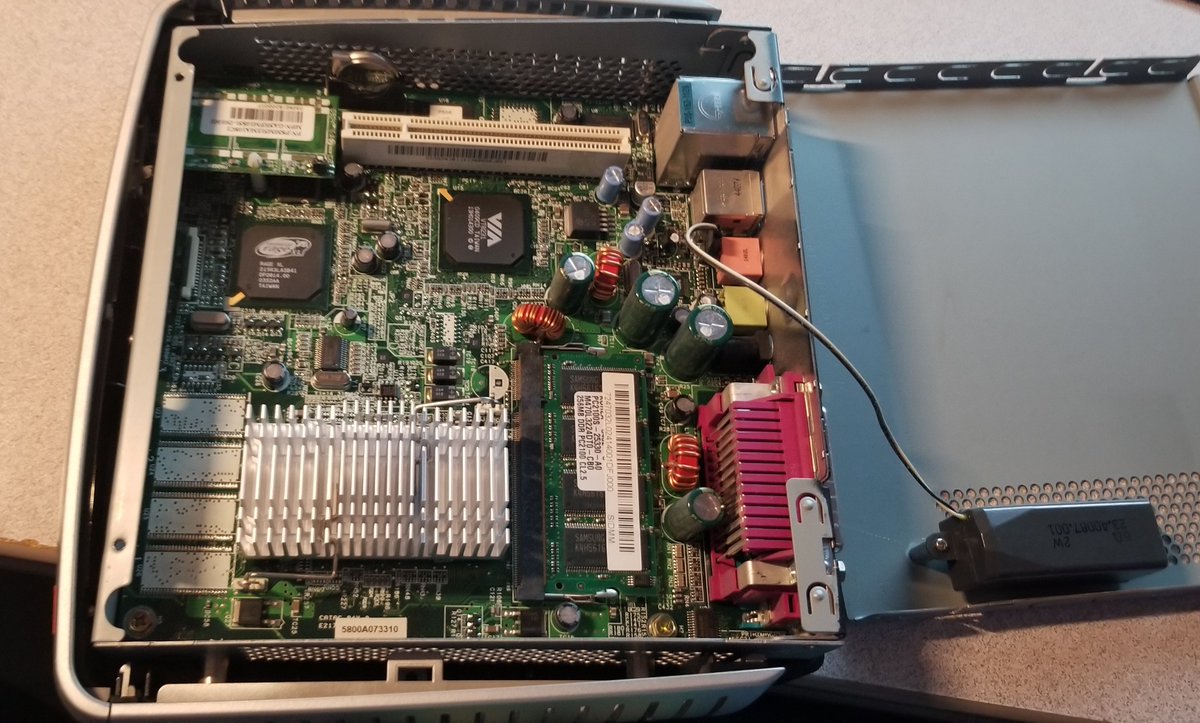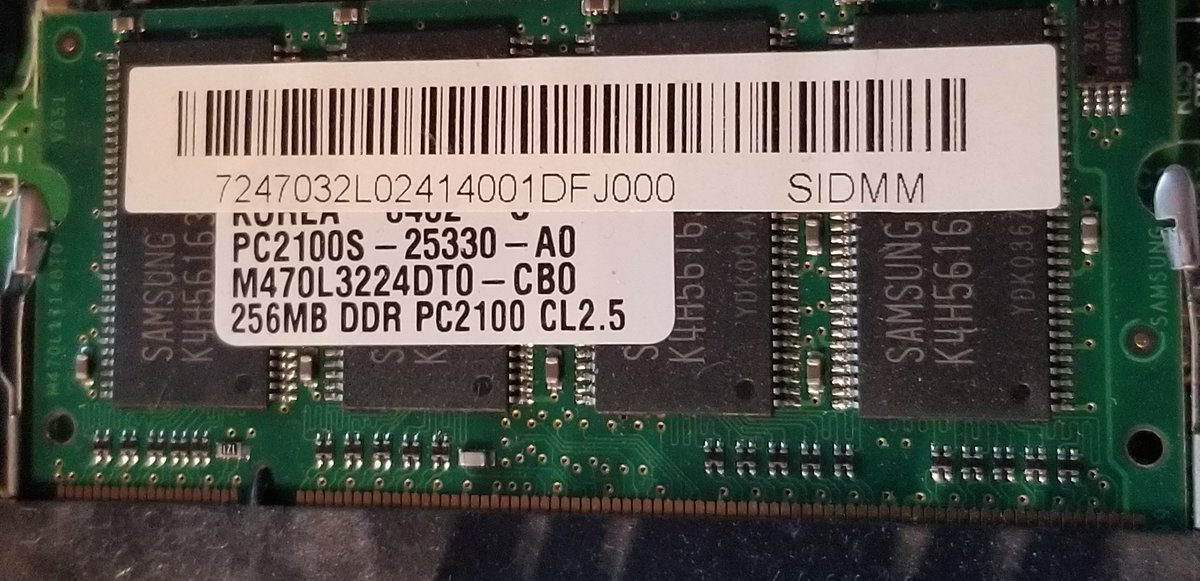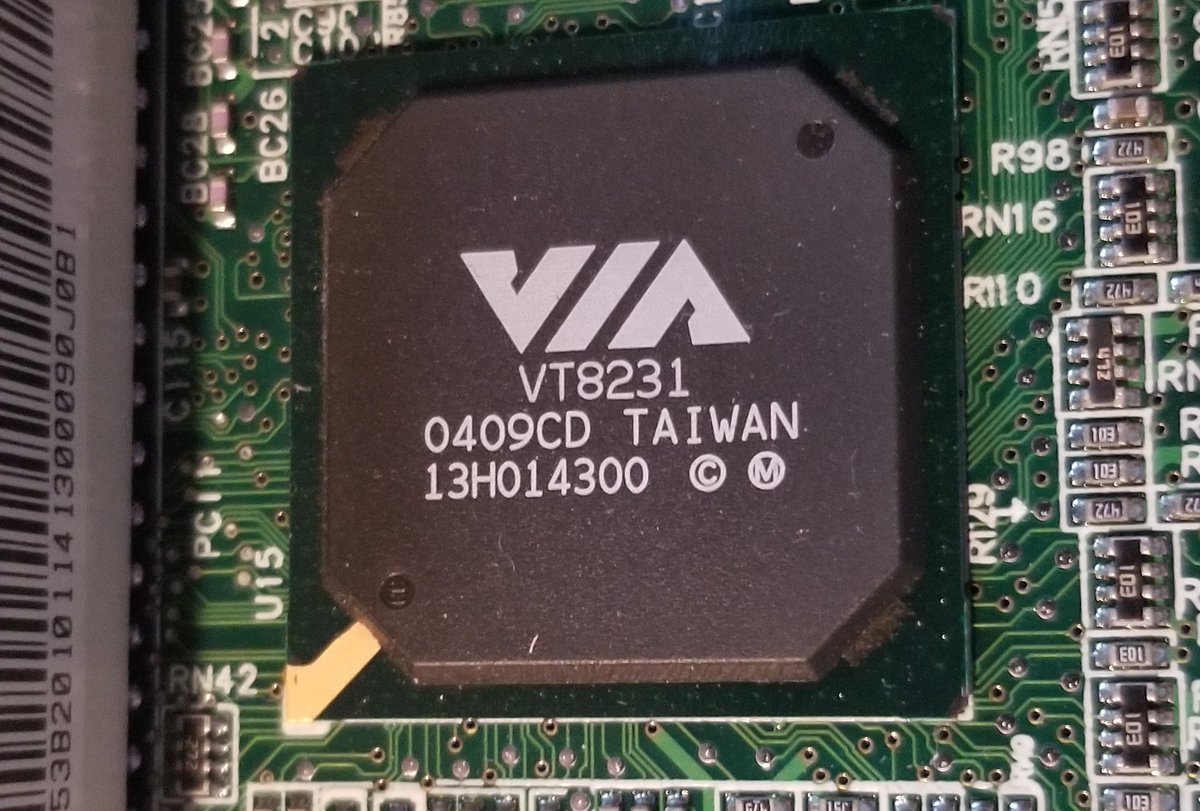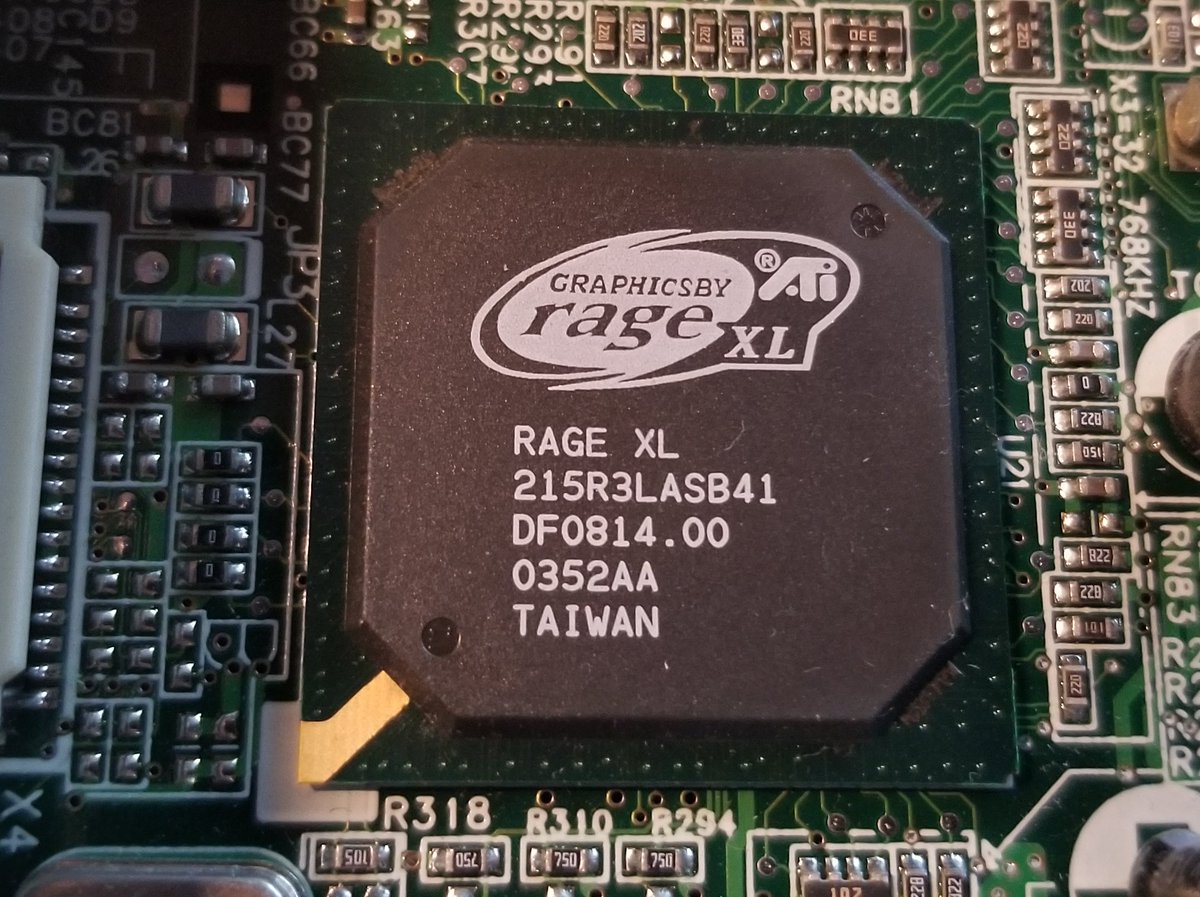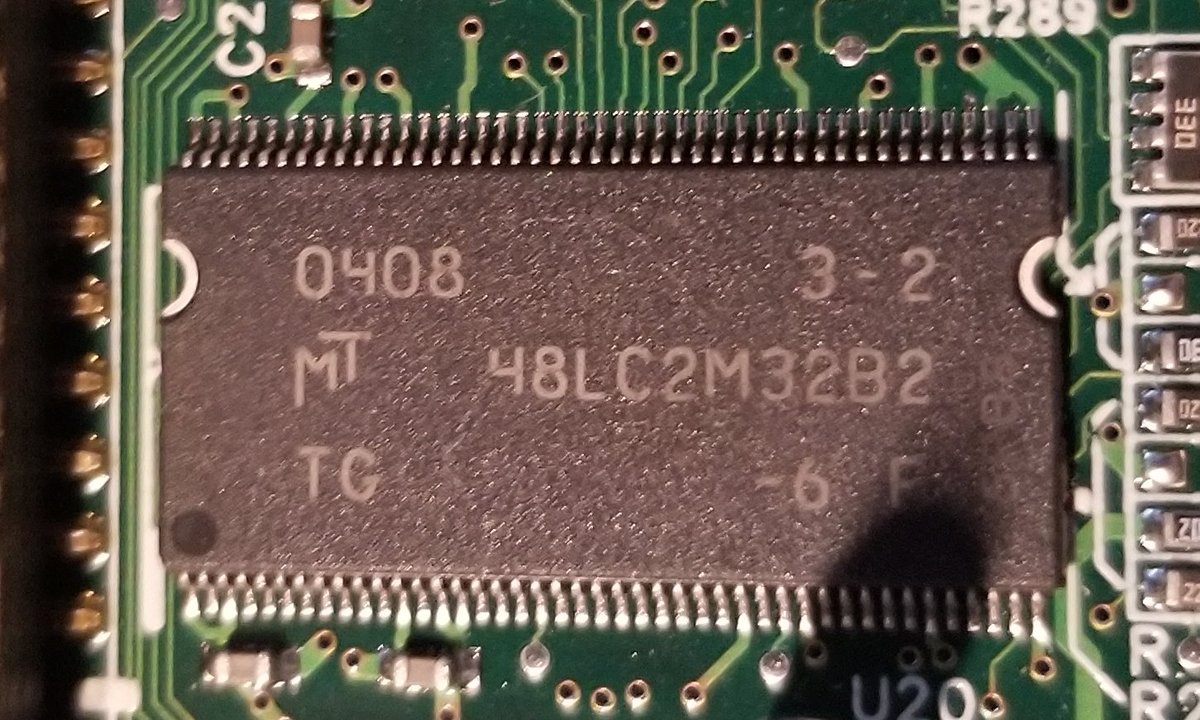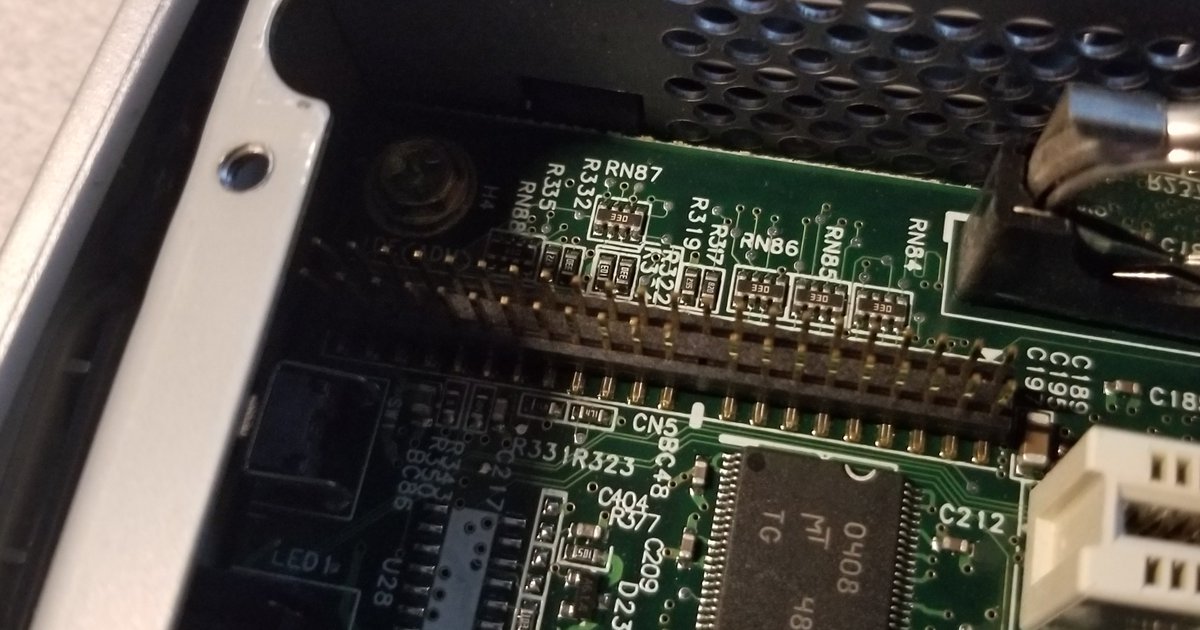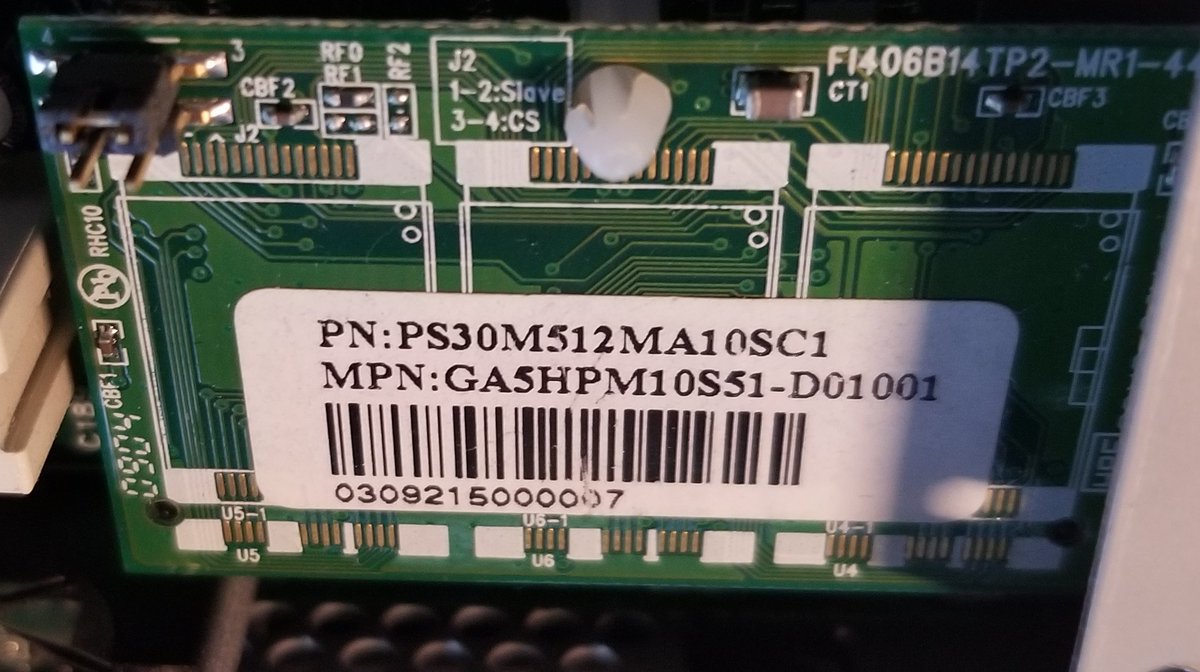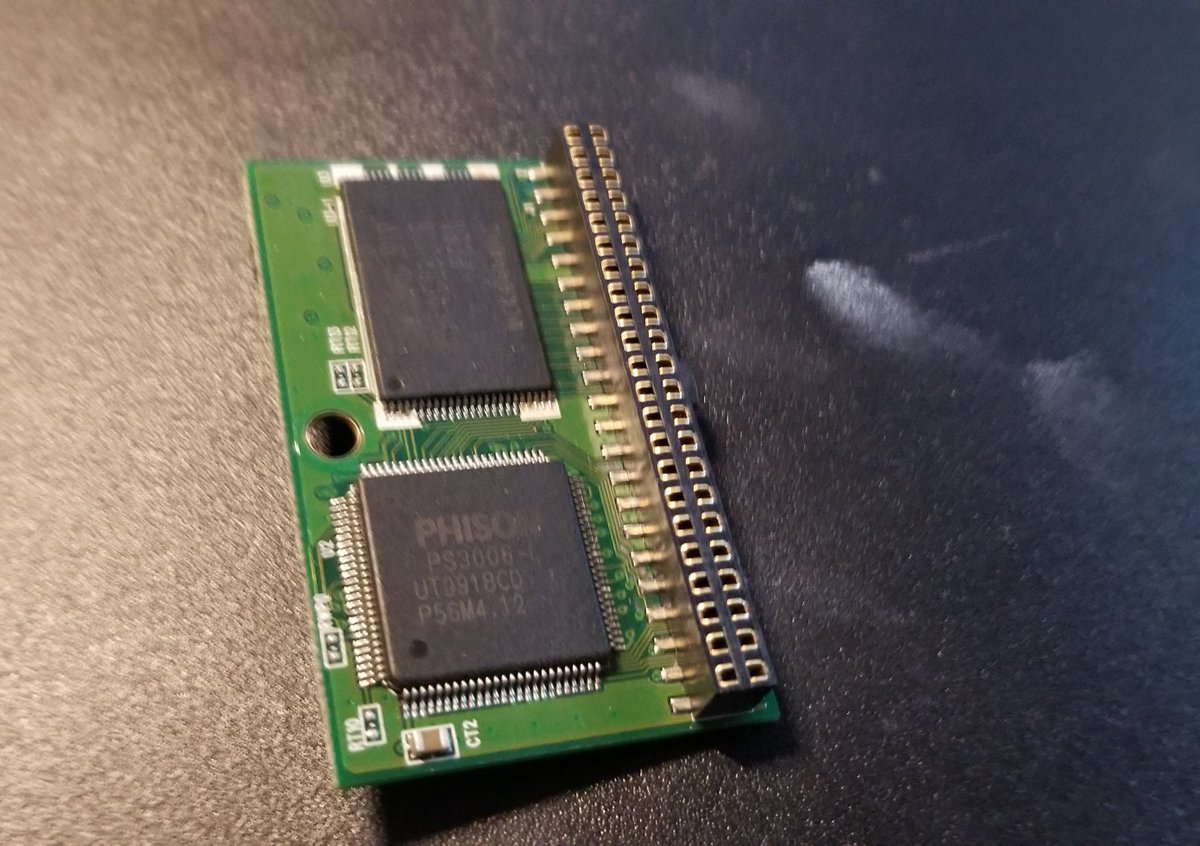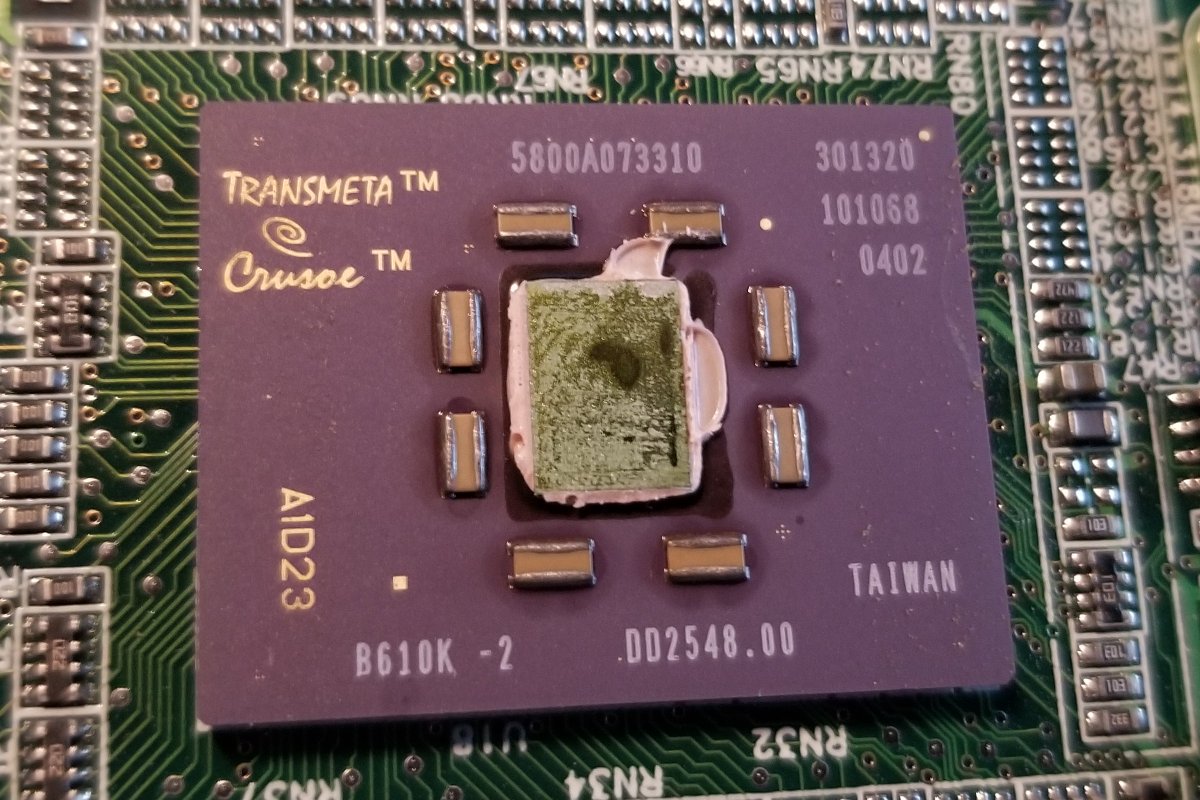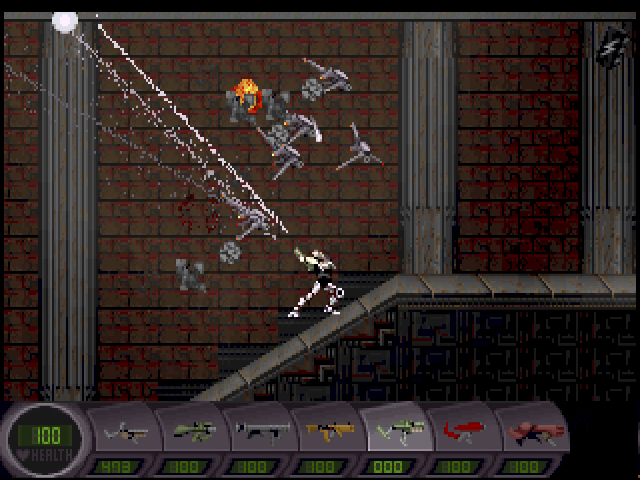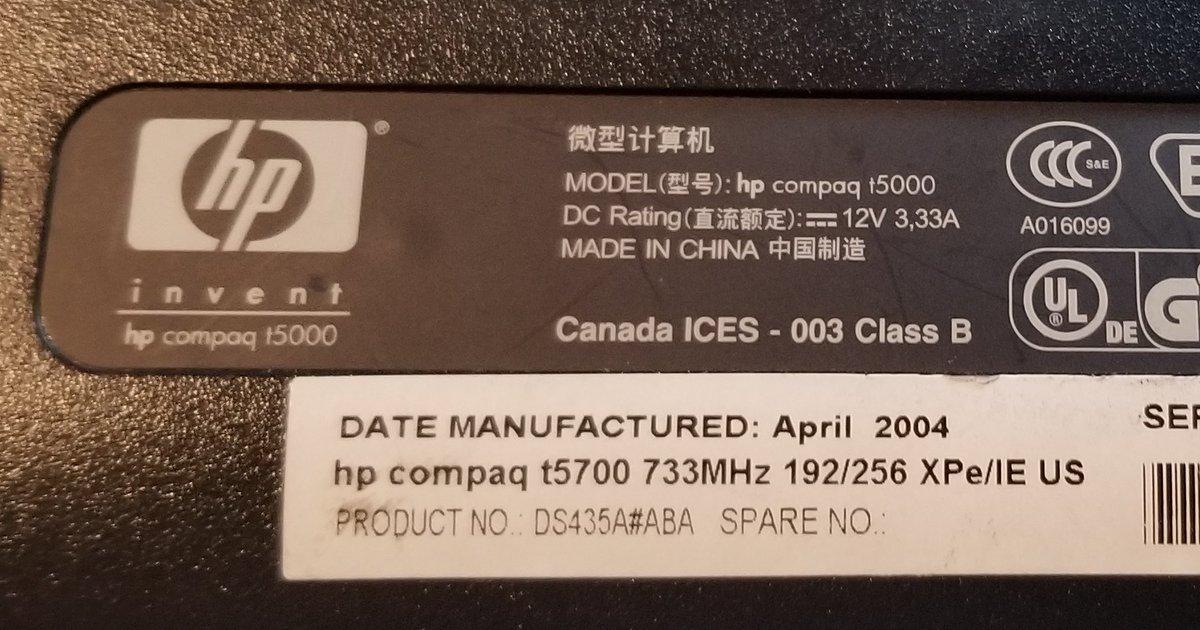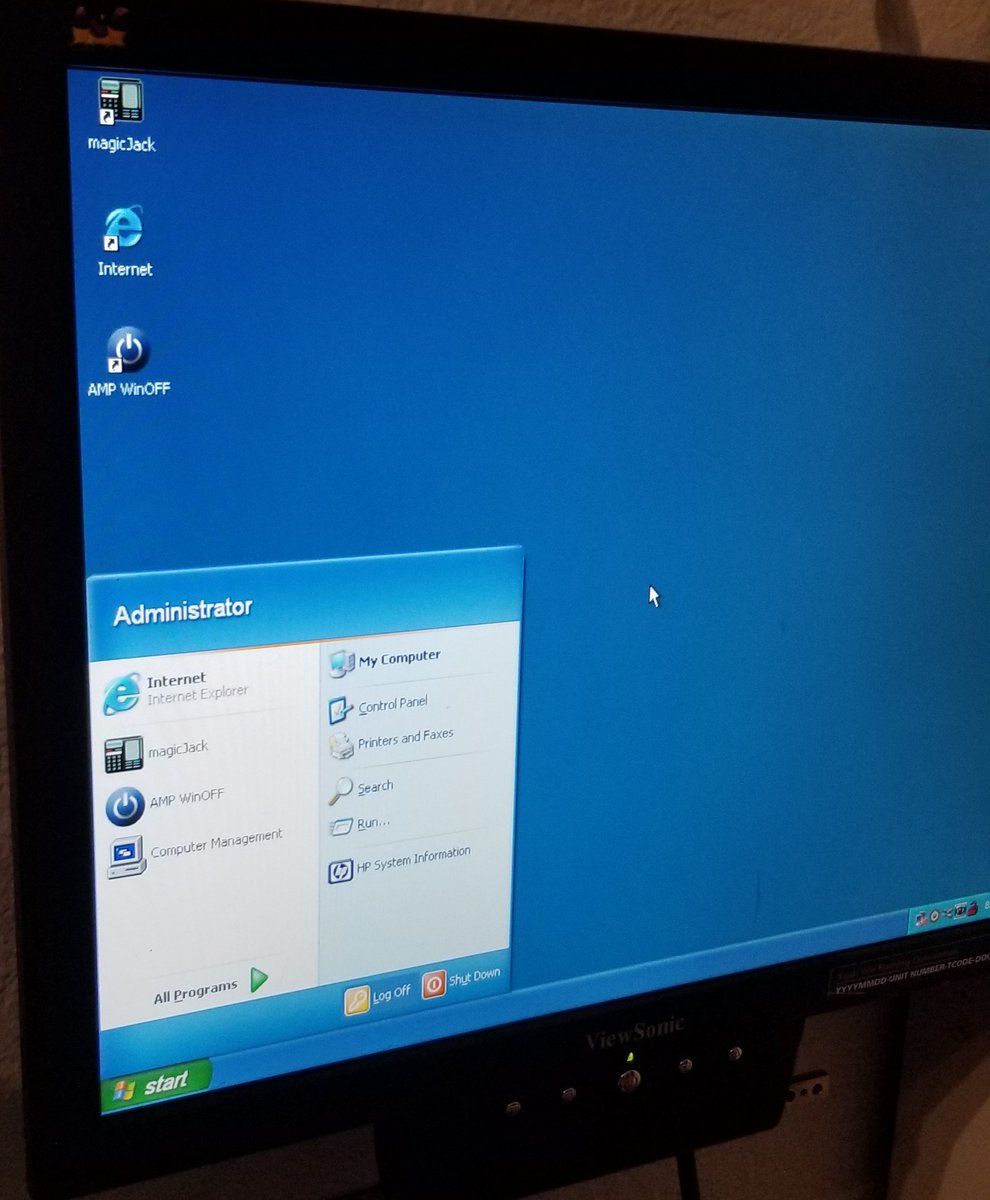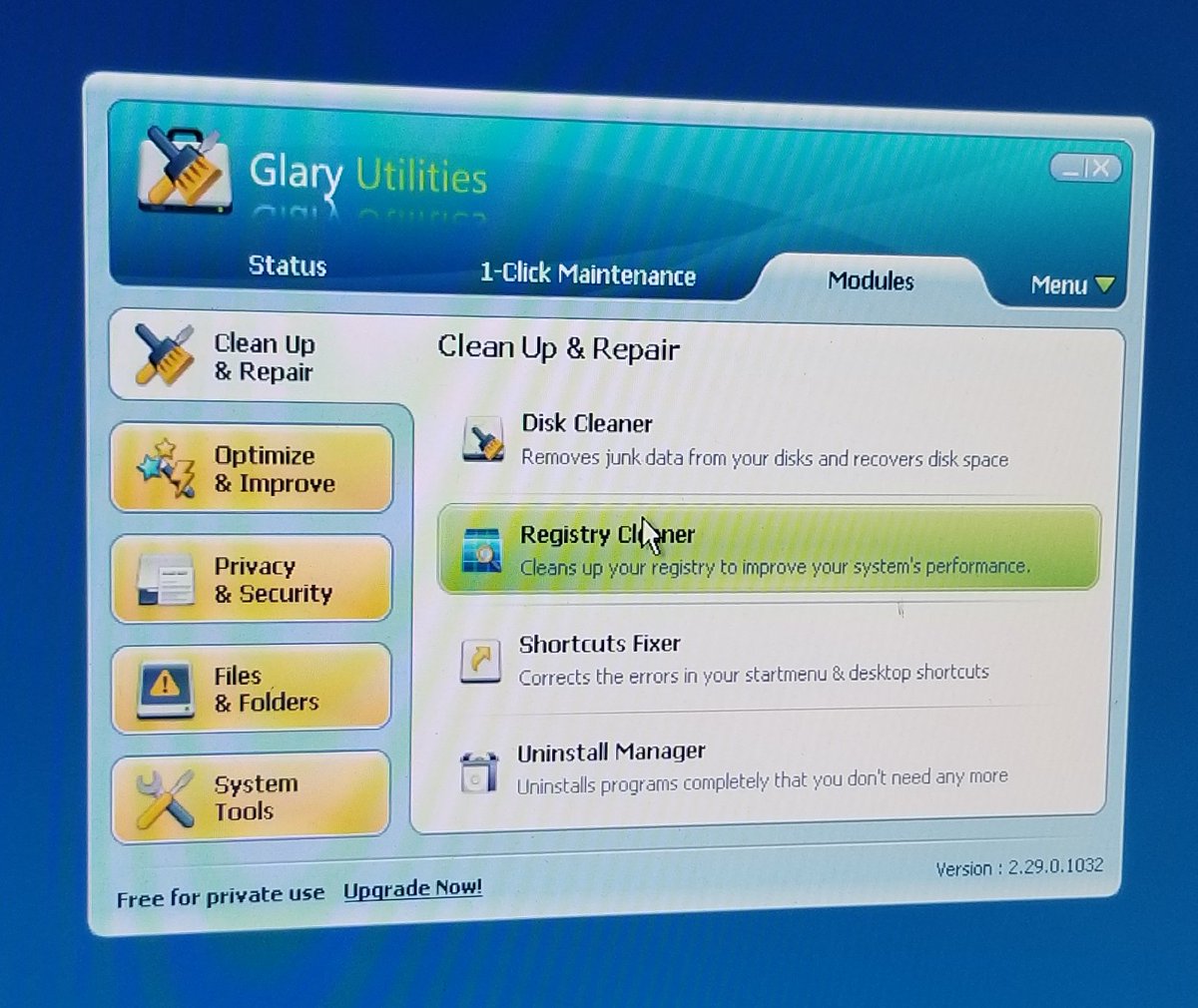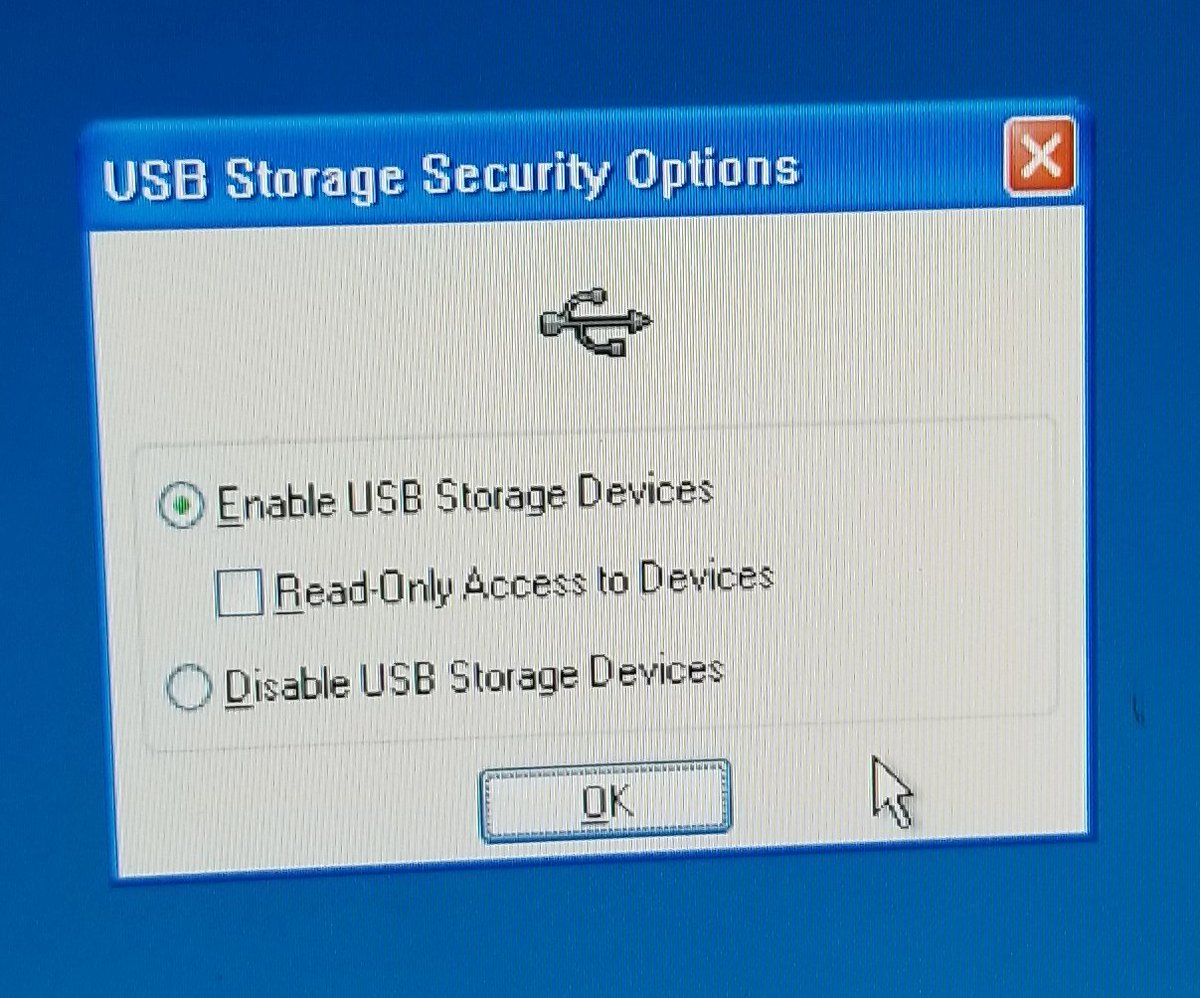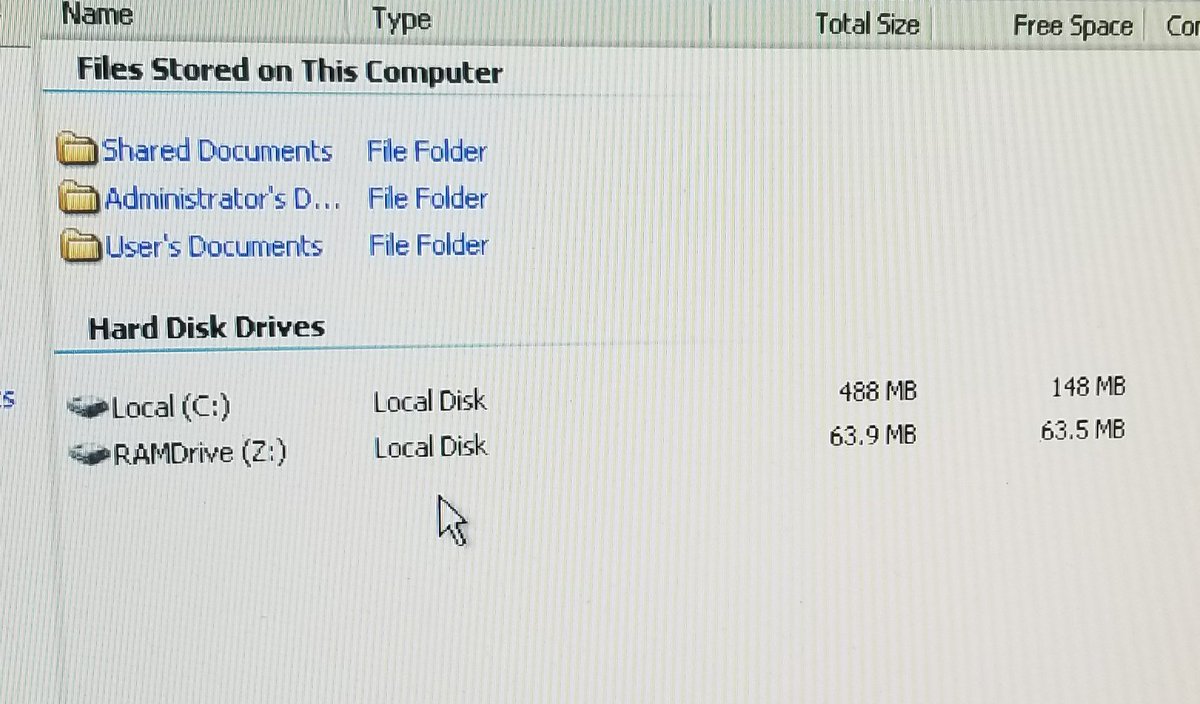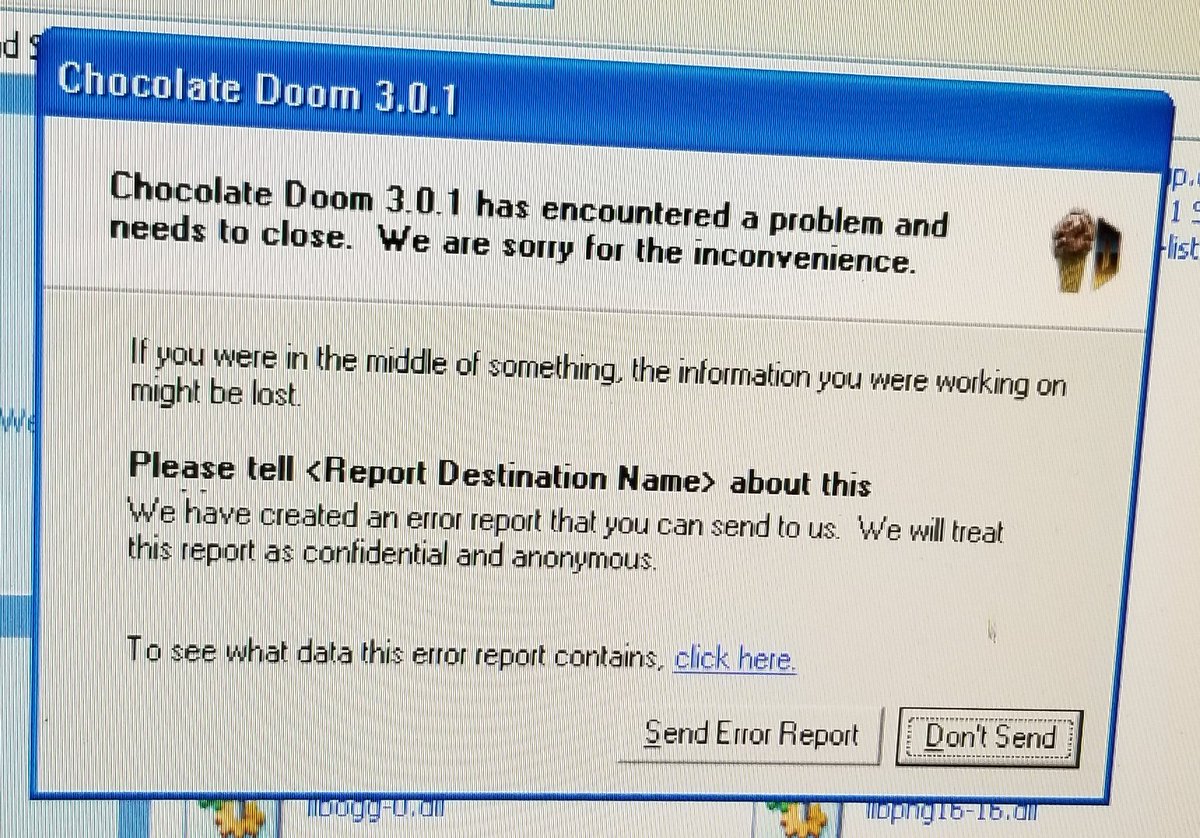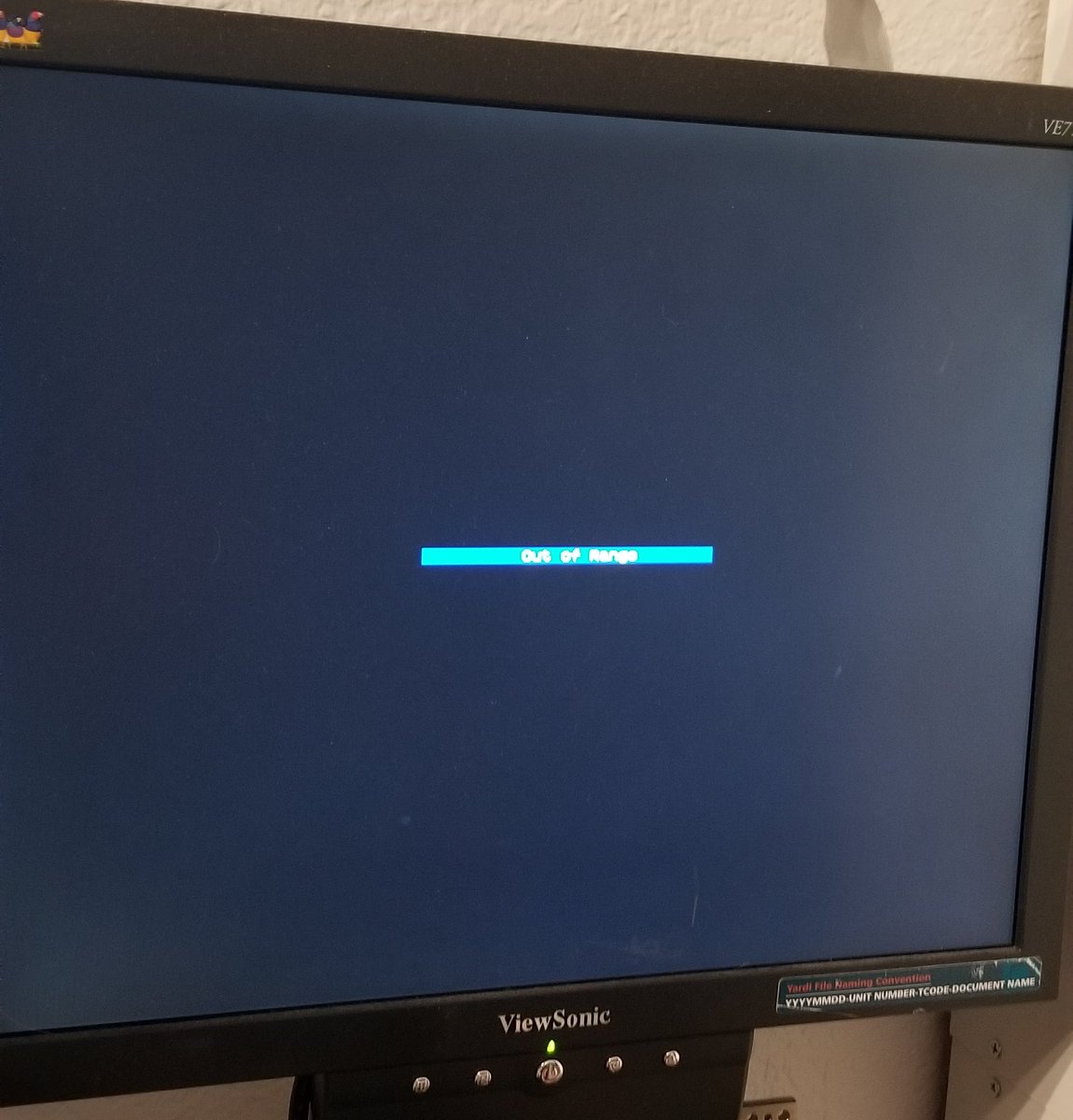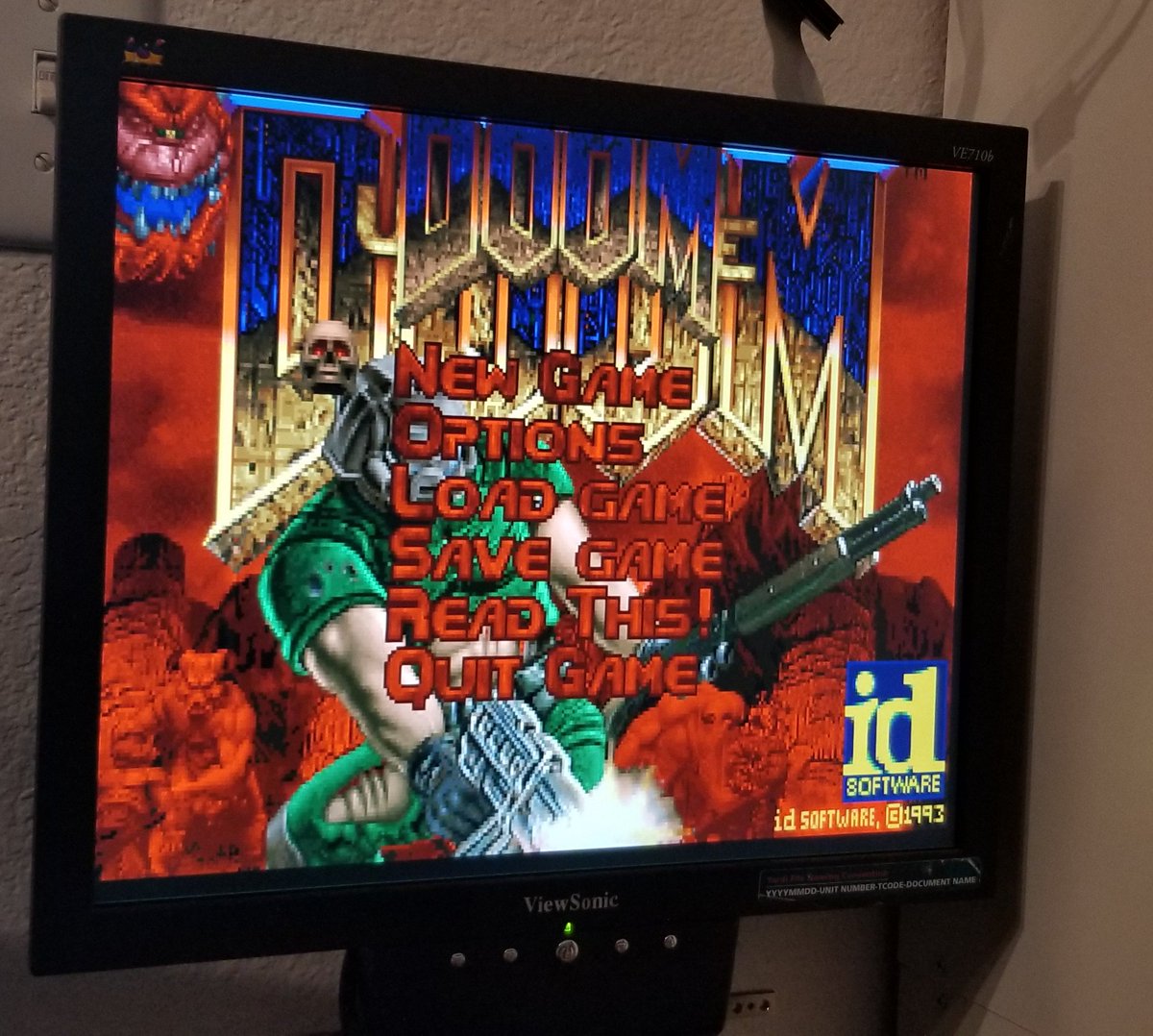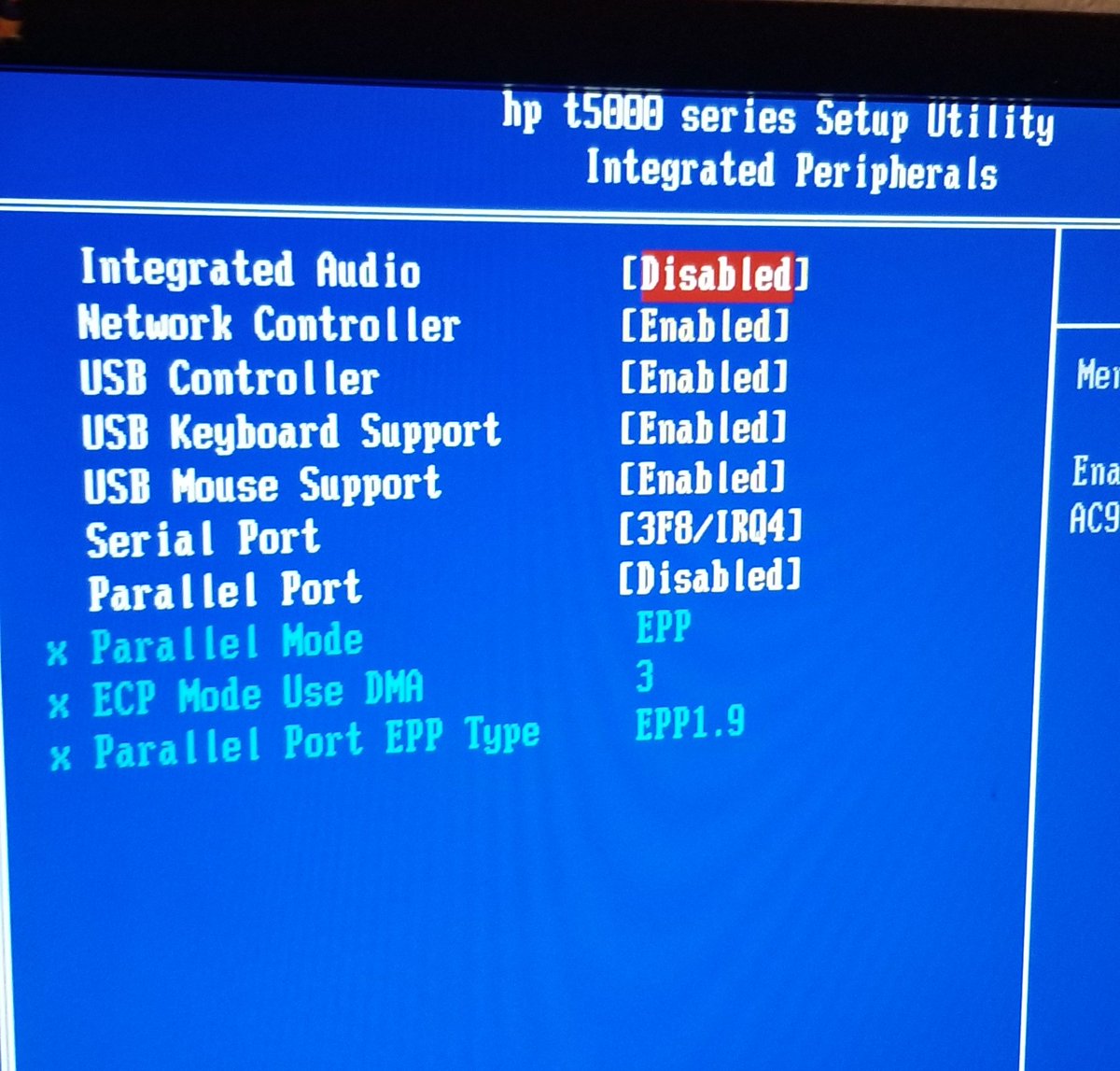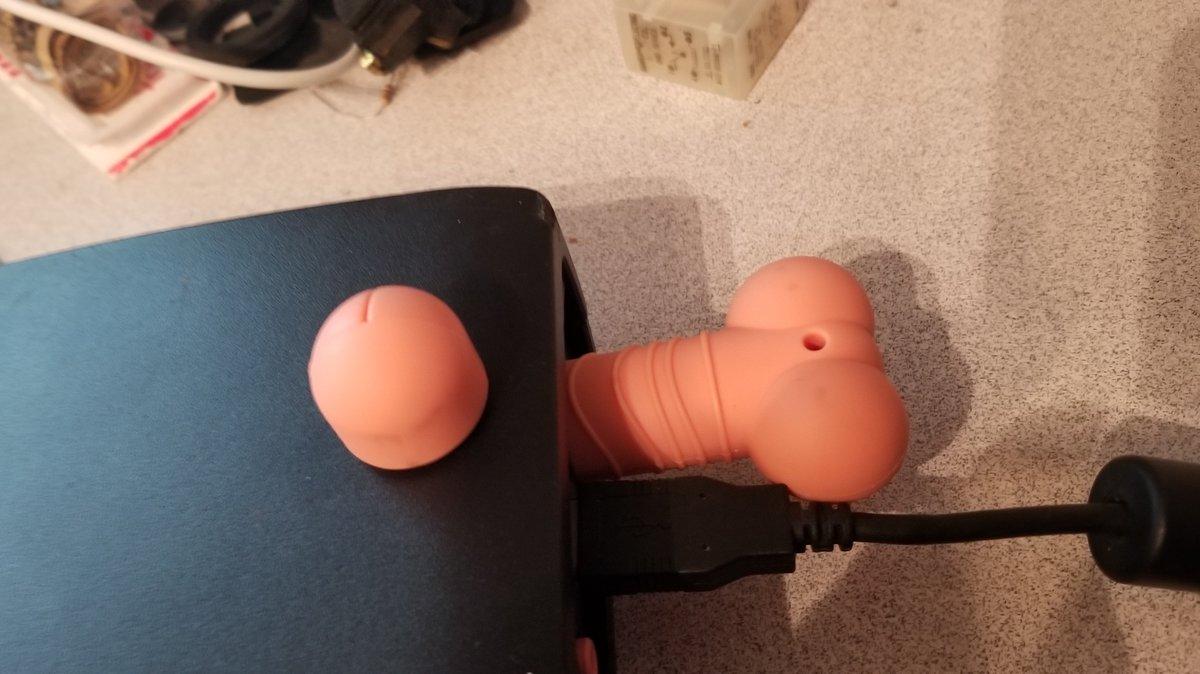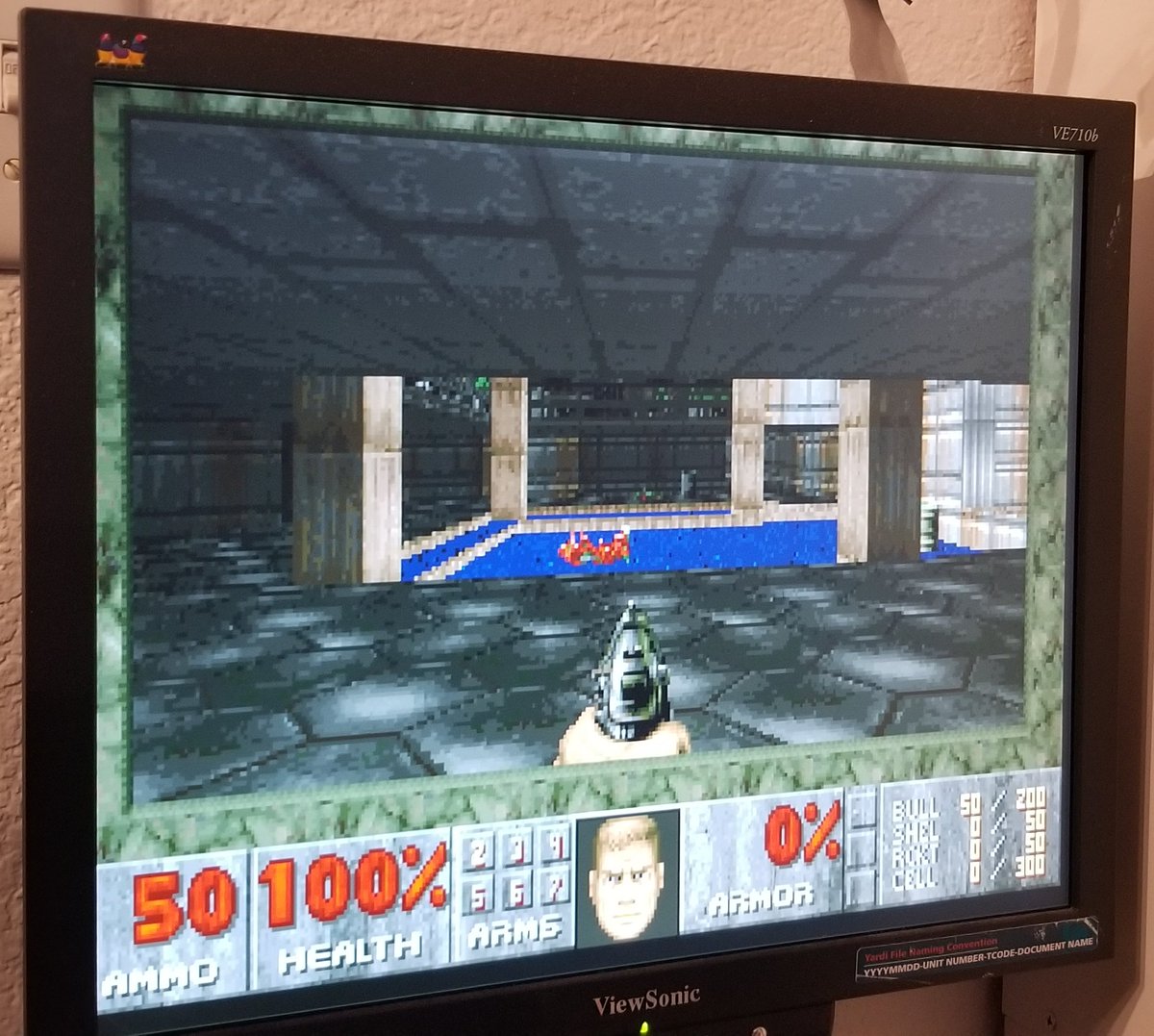SO I ALSO got a thinclient which has one (1) neat feature.
Check it out, it's an HP thin client. Looks boring, right?
Check it out, it's an HP thin client. Looks boring, right?
Inside, it's got a metal shell, which is slightly odd. Usually they don't have one, but maybe this one had some interference problems?
Under the shell we see it's got a PCI slot, some chips, some ram, and a little speaker built into the case.
And it's got an ATI Rage XL graphics chip.
This is apparently a 3D Rage Pro die-shrink, so it's equivalent in power to a Voodoo 2 or Nvidia RIVA 128
This is apparently a 3D Rage Pro die-shrink, so it's equivalent in power to a Voodoo 2 or Nvidia RIVA 128
This chip here is an MT48LC2M32B2. That's a Micron DRAM chip, 8 megabytes.
So this is probably VRAM for the video chip.
So this is probably VRAM for the video chip.
Storage is provided by one 44-pin compact-IDE port right here. That's the connector used by laptops.
The device plugged into it was this IDE DOM. It's a PS30M512MA10SC1.
I couldn't find any info on that name, but I can guess from the "512M" in the middle of the name that it's a half-gigabyte module.
I couldn't find any info on that name, but I can guess from the "512M" in the middle of the name that it's a half-gigabyte module.
So that's pretty much everything, right?
Oh, the CPU! It's hidden under that heatsink. Probably nothing special though, maybe a VIA C3? AMD Geode? Maybe a Celeron?
Oh, the CPU! It's hidden under that heatsink. Probably nothing special though, maybe a VIA C3? AMD Geode? Maybe a Celeron?
So this is a TM5800, a very unique CPU from 2001.
Here's the interesting thing about this CPU: Although it acts like a x86 CPU, it's not: It's instead a custom 128-bit core that translates x86 code at runtime into its own internal architecture.
Here's the interesting thing about this CPU: Although it acts like a x86 CPU, it's not: It's instead a custom 128-bit core that translates x86 code at runtime into its own internal architecture.
this is called "Code Morphing Software", and the idea is that it allows a lot of the parts of a CPU to be emulated in software, and it also allows just-in-time optimizations to be applied to raw x86 code.
it also was implemented in rewritable microcode, meaning you could UPGRADE YOUR CPU IN THE FIELD, to a limited degree.
You could also switch the ISA implemented by the chip, by changing the software: Transmeta demoed one of their chips running native Java VM instead of x86
You could also switch the ISA implemented by the chip, by changing the software: Transmeta demoed one of their chips running native Java VM instead of x86
But yeah, the way the processor works is very different from most processors. Like, a given piece of code may not even be translated to the native Crusoe instruction set: instead it will be emulated in software, and the CPU will profile how slow it is
once it determines that the code is being run a lot of times and could be optimized, it then morphs it to the native code and runs the native version instead.
So, Transmeta: Founded in 1995, officially announced in 2000. Their second CPU was launched in 2003, and in 2005 they shifted towards licensing their developed technologies instead of producing chips.
They completely stopped work on designing new CPUs in 2007.
They completely stopped work on designing new CPUs in 2007.
They got acquired by Novafora in January 2009, and the patents were sold to Intellectual Ventures.
Novafora then went out of business in August 2009.
So all that remains is the patents.
Novafora then went out of business in August 2009.
So all that remains is the patents.
Transmeta is also notable for some of their employees... They employed Linus Torvalds (who made some minor operating system, BeOS I think?) from 1997 to 2003.
They also employed Dave Taylor, who had previously worked at id Software.
He's the one who implemented the cheat codes into Doom!
He's the one who implemented the cheat codes into Doom!
I should have mentioned him in my thread about doom cheat codes: https://twitter.com/Foone/status/1189249817492557826
anyway, after Doom, he did the sound engine, network stack, and VESA support for Quake, then he left to found his own company: Crack Dot Com.
At Crack Dot Com, he made the amazing platform shooter Abuse, and worked on the hybrid RTS/FPS game Golgotha, which was never completed, as Crack Dot Com folded in 1998.
Anyway, the Transmeta Crusoe was a very unique CPU that never really delivered on the promise of the Code Morphing technology, but this thin client was worth getting for that alone.
For reference, it's an HP Compaq t5000.
For reference, it's an HP Compaq t5000.
BTW, this is a "thin client" in the kind of lie way that a lot of early-2000s thin clients were. It's basically just a very low-specced small PC. It runs XP, after all, it's not really "thin".
These often make decent DOS machines. Phil's Computer Lab has done a bunch of videos on them.
For example, on the HP t5720:
For example, on the HP t5720:
It makes sense. They're an underpowered Windows XP machine... or a kick-ass Windows 98 computer!
BTW, the Code Morphing Software for the Transmeta CPUs was never documented or provided to non-licensors, nor was the internal instruction set ever documented... by Transmeta at least.
There was some interesting reverse engineering done by an anonymous author in 2004, which decoded an update for an HP tablet that used a Transmeta chip, and was able to figure out quite a lot of the internal workings
https://www.realworldtech.com/crusoe-intro/
https://www.realworldtech.com/crusoe-intro/
although I don't think it's ever been demonstrated, in theory this would let you build your own code morphing software and basically turn your Transmeta Crusoe into a 6502 or a z80 or pretty much whatever else you wanted.
Functionally this really isn't different than running an emulator that uses JIT compilation, but it's implemented at a much lower level and is done in a system-transparent manner.
For example, the computer using the Crusoe chip doesn't need to know it's an emulator, because it acts just like a standard x86 chip.
you don't need Windows XP: Transmeta Edition, in other words.
an interesting thing about the CPU: it internally rewrites the ram that the x86 code see, so you lose about a megabyte of RAM for the CMS software.
Inside that RAM is a signature, which is used to check that all updates to CMS are signed by transmeta.
Inside that RAM is a signature, which is used to check that all updates to CMS are signed by transmeta.
and since the x86 code can't see that RAM, it can't change that signature and allow an update of unsigned code.
But with some specialized hardware or certain buggy peripheral chipsets, you can direct DMA requests to the Crusoe RAM, and just overwrite the signature
But with some specialized hardware or certain buggy peripheral chipsets, you can direct DMA requests to the Crusoe RAM, and just overwrite the signature
Now that I got the drive dumped, I tried booting it.
Seems to work fine! Boots right into XP, in administrator mode. It's got magicJack and some RDP/VNC/Citrix clients installed.
Seems to work fine! Boots right into XP, in administrator mode. It's got magicJack and some RDP/VNC/Citrix clients installed.
it's also got this neat little USB security option: you can disable access to USB storage, or make it read only.
wait, didn't I run into this exact problem like a month ago?
yeah. https://twitter.com/Foone/status/1269506552261570560
yeah. https://twitter.com/Foone/status/1269506552261570560
well, by going back to ChocolateDoom 0.1, I got it to get to the menu.
As soon as I enter a level, though, it crashes, because there's no sound.
As soon as I enter a level, though, it crashes, because there's no sound.
dang it, the system tried to boot from my penis
apparently I most recently used my penis to install linux somewhere and I couldn't delete the EFI partition from windows because it's scared of EFI system partitions.
I had to install doom using my penis because I was scared to connect this system to a network. who knows where it's been?
it's running XP SP2, so maybe modern Chocolate Doom is requiring something that's in XP SP3?
BTW, what's on the ramdrive:
cookies, internet cache, and the print spooler.
cookies, internet cache, and the print spooler.

 Read on Twitter
Read on Twitter